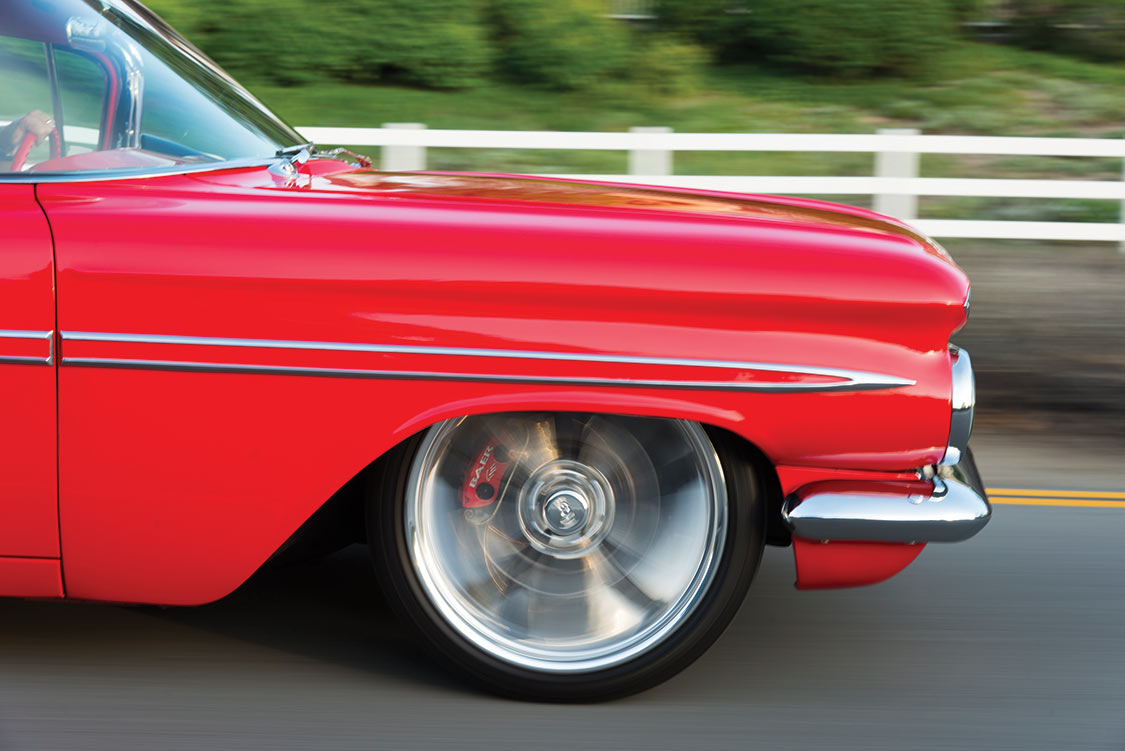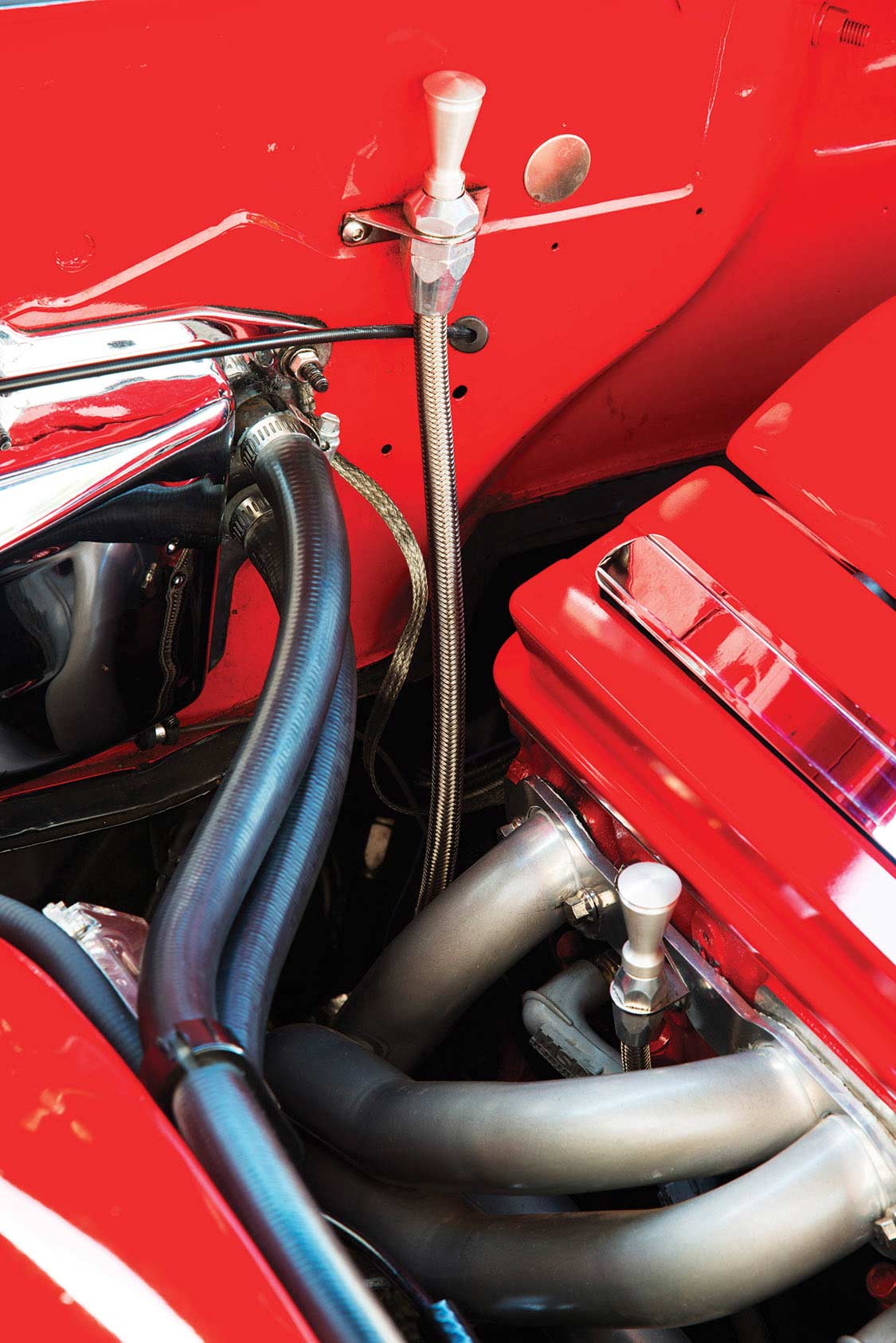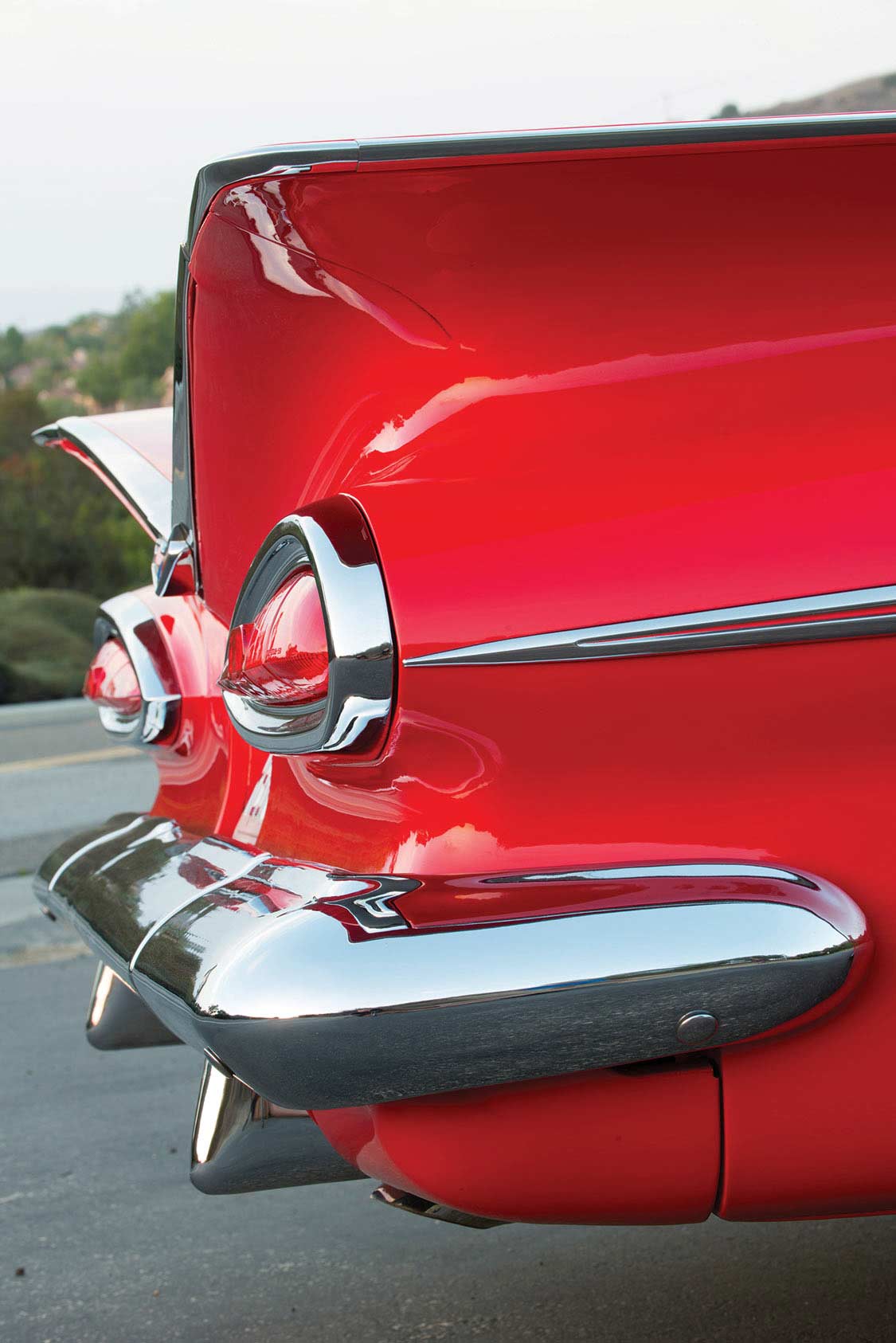 ALAN PARADISE
.
August 10, 2022
.
All Feature Vehicles
ALAN PARADISE
.
August 10, 2022
.
All Feature Vehicles

There is something obviously special about milestone automobiles with their elements and styling cues that endear us to particular makes and models. Some of these elements are subtle, like the stainless steel body-trim of a ’57 Bel Air or the unique shape of a ’63 split-window Corvette. Others are more menacing as in the hockey stick Hemi on the ’70 ’Cuda or the cheese-cutter body shape of a Testarossa. These features help bring presence to a car. Then there are cars that seem to have an aura all their own, like a Chrysler Prowler or Shelby Cobra.
Every now and again an automotive design that is long gone and forgotten or perhaps one that was once so common it was overlooked at first, resurfaces in an example that commands a new level of respect and admiration. Such is the case with one very special, last of the ’50s Chevrolets and its equally special and unique owner.
Before we get too far with the who, what, where and why of the build, it’s important to understand why the ’59 and ’60 Chevrolet line should be considered historic.


For 27 years, beginning in 1932, Harley Earl guided the design of every General Motors product. He was far and away the greatest automotive stylist the industry has ever known. He was the creator of the concept car and the father of the Corvette. He ushered in tailfins, bumper bullets, two-tone and tri-tone paint schemes. He was the first to hire female stylists and experiment with aerodynamic principals. Every classic shape that emerged from Detroit from 1932 to 1960 has his fingerprints on it. The ’59 Chevrolet was the last model that Earl had a direct hand in creating. After he retired in 1958, his long-time right-hand man Bill Mitchell took over as head of styling. With that came leaner trim, lower beltlines and cookie-cutter styling.
Fast forward to 2002. As groundbreaking as the design of the ’59 Chevrolet was— with is batwing rear deck, cat-eye taillights, fender birds and toothy grille—the car was lost in time. It had taken a back seat to the shoebox 1955-57 lines and the unique ’58, not to mention the scramble for the 1961-63 Impala models. But Carson Lev, at the time head of branding and marketing for Mattel Hot Wheels, saw the hidden aura surrounding Earl’s final Chevrolet edition.
For 27 years, beginning in 1932, Harley Earl guided the design of every General Motors product. He was far and away the greatest automotive stylist the industry has ever known.
Lev is no stranger to the performance and custom car community. In fact, he’s been a steady participant even before he reached driving age. As a pre-teen he was a regular at a little neighborhood drag strip near his childhood home, a place called Lions. “Since I was in high school, I’ve always had some sort of muscle car or hot rod. The list is pretty long: a ’65 Mustang, a couple of Z/28 Camaros, a ’32 Ford, ’55 Bel Air, Impala SS—you know, the usual stuff.” Lev recalled.
It was a little over 12 years ago when something out of the ordinary caught his eye. “While on a business trip in Colorado, I came across a ’59 Bel Air at, of all places, a Corvette restoration shop. It was freshly painted but far from complete. But, that didn’t matter at the time. The body, with the wing-shaped trunk and unique chrome trim spoke to me. Looking at it, I suddenly realized that all the great cars I have had were kind of ‘me too’ cars. This was something completely different,” he admitted.
Lev made a deal to purchase the car before heading back home to Los Angeles. A few weeks later, the Bel Air arrived via covered transport. From that day on, what he thought was going to be a short-term project car, turned into a long-term labor of love.
There’s always risk when stepping out of the mainstream. Unlike building a ’57 or ’62 Bel Air, parts and practices for a ’59 or ’60 are rare and mostly untried. “It wasn’t like you could call up a buddy and say, ‘How does this or that fit or will these items work?’ because no one I knew had done what I was trying to do.” Lev said. The first step was to sort out the mechanicals. He went to Don Hardy, a trusted friend and engine builder for a recommendation. Shortly after, a Corvette Grand Sport LT4 motor was delivered. However, before dropping it into place, the block was cleaned and painted PPG Torch Red to match the body. While this was in progress, the body and frame were separated and the old Chevy underpinning was powder coated. From here the progress really got interesting.
It wasn’t enough to have one of the last designs that had Earl’s DNA; Lev added the touch of another legendary automotive creative master, Chip Foose. Lev and Foose had been close friends for years and worked together on Hot Wheels projects dating back to the time when Foose worked with Boyd Coddington. “Chip and I have a great history together. When I was at Mattel, we worked together to create the full-size versions of the Twin Mill and Deora II. So, it seemed only natural to get his take on such an unusual project,” said Lev.
A few weeks later, the Bel Air arrived via covered transport. From that day on, what he thought was going to be a short-term project car, turned into a long-term labor of love.
The Lev/Foose collaboration pushed the project to new levels. To achieve the desired stance but still retain excellent ride quality, John Hotchkis was asked to engineer the suspension. The Hotchkis team started with Bell Tech spindles. A tubular suspension was built aided by an electronically controlled air-ride system to optimize ride quality and handling at various heights. Baer multi-piston calipers and 13-inch drilled rotors were applied to all corners. Driveline Specialties installed a two-piece billet yoke into the solid rear axle with 3.73:1 gears.
There’s an old belief that tires and wheels make the car. However, the suspension makes the tires and wheels. These inter-connected elements must work together to accomplish the right look. For this Foose offered up his 20-inch Nitrous billet aluminum wheel design. “The most important issue was getting the offset exactly right. Chip and I took three trips to the factory before it was perfect. It was a lot of work but well worth the effort,” explained Lev.
As the wheels were being sorted out, a set of rollers stood in as the engine and transmission were dropped in. The Don Hardy-assembled LT4 was attached to a Dave Killackey-built GM 4L-60E tranny. Rob Phillips at PCH Rods was the trusted talent to assemble all of the components. Phillips added a Watson aluminum radiator and performed all of the wiring and computer controls.


Now that the Chevy was road worthy, Lev turned his attention to the interior design and audio components. Foose designed the interior using many original GM elements. At this point, Lev called in another industry contact, Mitch Katz of Katzkin Leather. Although Katzkin is the premiere supplier of aftermarket leather interiors, they rarely take on one-off projects. But, this was different and Katz wanted to be a part of it. The black and red leather was designed and stitched to have ties to the original Chevy showroom two-tone style with a more modern flair. Door panels were created with black leather pleats with oversized white piping. The dash was color matched and fitted with Auto Meter gauges, white face on the vitals and classic white-on-black Pro Comp for the speedometer. The final touch was an ididit column with billet gear selector, tilt and signal stems.
The car became known as Red Phin by the circle of professionals who applied their talents to the unique street machine. As it neared completion (as least for the time being) the new Foose wheels were matched with Pirelli P-Zero tires, 255/35-20 front and 275/55-20 rear. When the aluminum and rubber were bolted on, it was time to stand back and say “ah.” Or in this case it was more like “awe.”

There was only one element yet to execute. The tasteful and respectful ARC audio components with an Eclipse head unit were installed at Audio Shoppe in Riverside, California. “It has enough wattage to thump some hard bass, but I prefer tunes that are a little more period-correct,” Lev said.
Despite the carefully planed construction and high-quality components and build, one might believe that Red Phin would be a garage dream or trailer queen. Nothing could be further from the truth. Lev and the ’59 are SoCal regulars. Cruise night at the NHRA Museum, he’s there. Weekend at the Del Mar Goodguys events, he’s there. Pomona Swap Meet, you guessed it. Donut Derelicts on a Saturday morning, he’s parked in the front row.

Carson Lev is one of those guys that appears wherever the car action is, large or small. He even managed to get a cameo appearance in the feature film Snake & Mongoose as the Lions track announcer.
“People either love the Red Phin or hate it. It seems to evoke that type of reaction.” Lev said. From what we experienced, more seem to feel the former rather than the latter. It’s a unique application of a rare and wonderful model. Was it risky? No doubt. But there is something special about a guy willing to be a “me first” rather than a “me too.” It is that attitude that has made Red Phin a modern-day milestone performance custom, created by one of the most genuine and humble people in the automotive industry.

If the design of the ’59 Chevrolet line weren’t enough of a radical departure from the previous year, this was also the time Chevy released its first El Camino. It was basically a two-door wagon with a bed in place of back seats and the rear window pushed forward. It was GM’s answer to the Ford Ranchero and replaced the slow-selling Cameo Carrier pickup truck. Just 22,246 El Caminos were sold. In contrast, 447,100 Bel Airs were produced that model year. To put that into perspective, in 1957, Bel Air sales were 702,220. Perhaps the world wasn’t ready for the unique styling of the ’59 Chevrolet.
We use cookies to enhance your browsing experience, serve personalized ads or content, and analyze our traffic. By clicking "Accept All", you consent to our use of cookies. Visit our Cookie Policy for more info.
Notifications
Share Link